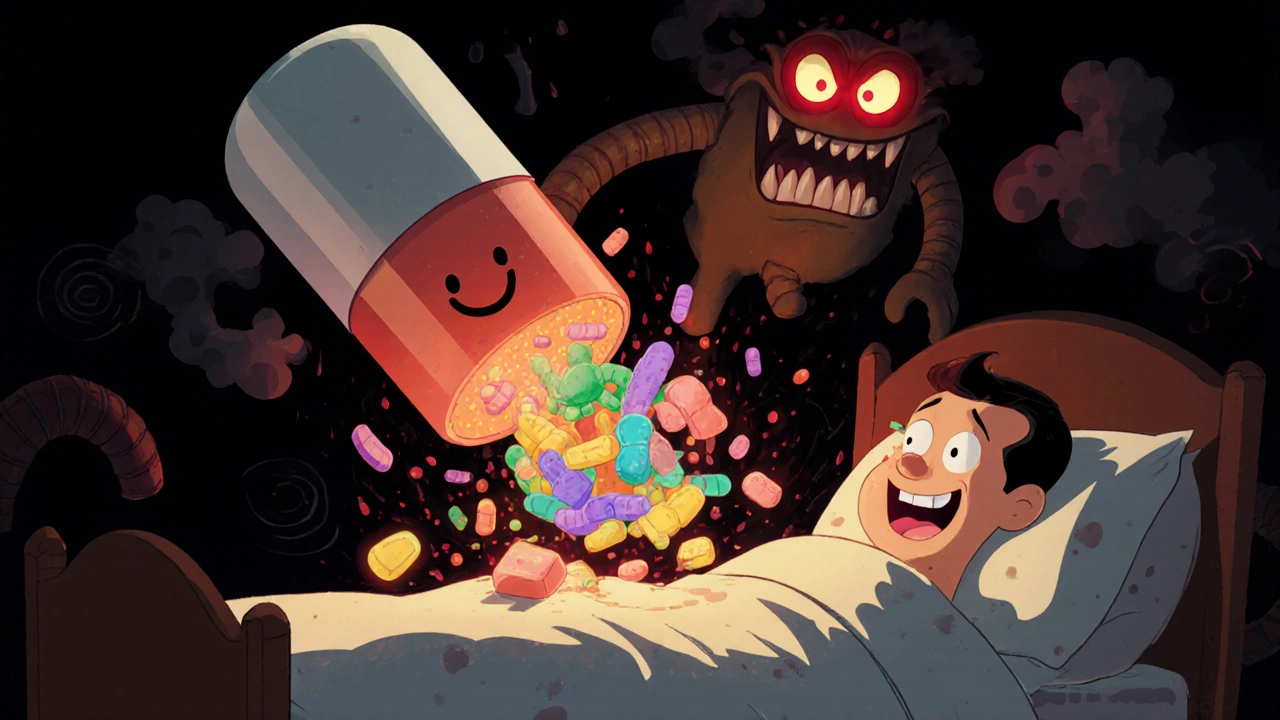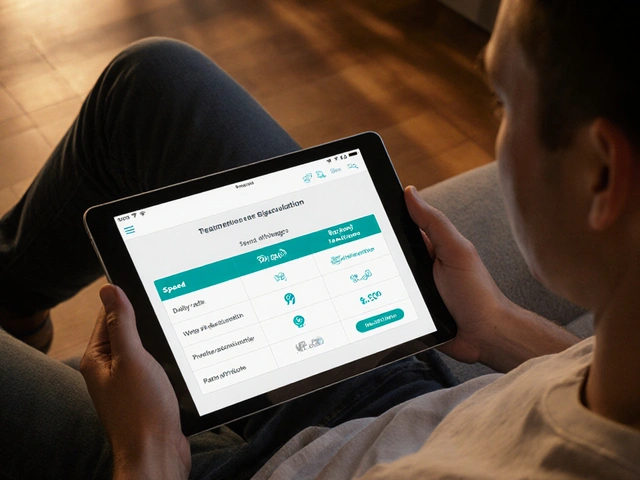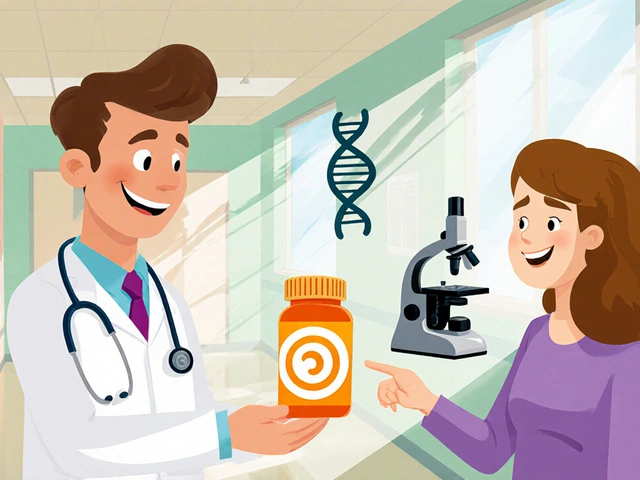C. diff Risk Calculator
This calculator estimates your risk of developing C. diff infection based on your antibiotic use and other factors. C. diff is a serious bacterial infection that can occur when antibiotics disrupt the balance of bacteria in your gut. The CDC estimates that 30-50% of antibiotic use is unnecessary.
Antibiotic-Induced Diarrhea Isn’t Just an Inconvenience - It Can Be Life-Threatening
When you take an antibiotic, you’re not just killing the bad bacteria. You’re also wiping out the good ones - the trillions of microbes that live in your gut and keep things running smoothly. For many people, this leads to loose stools, cramps, and bloating. That’s antibiotic-associated diarrhea (AAD). But for about 1 in 5 of those cases, it’s something far worse: a C. diff infection.
Clostridioides difficile, or C. diff, is a tough, spore-forming bacterium that doesn’t normally cause harm - until antibiotics clear the way for it to take over. Once it settles in, it releases toxins that rip through the lining of your colon. The result? Severe diarrhea, fever, dehydration, and in the worst cases, toxic megacolon or death. In the U.S. alone, C. diff causes over 500,000 infections every year and kills nearly 30,000 people within 30 days of diagnosis.
Which Antibiotics Are Most Likely to Trigger C. diff?
Not all antibiotics carry the same risk. Some are like wrecking balls to your gut microbiome. The highest-risk offenders include:
- Fluoroquinolones (like ciprofloxacin and levofloxacin)
- Third- and fourth-generation cephalosporins (such as ceftriaxone and cefepime)
- Clindamycin
- Carbapenems (like meropenem)
These drugs are broad-spectrum - they hit a wide range of bacteria, including the protective ones in your intestines. Even a short course - just 3 to 5 days - can be enough to trigger C. diff. That’s why doctors are now told to ask: Do I really need to prescribe this? The CDC estimates that 30% to 50% of antibiotic use in hospitals is unnecessary.
How Do You Know If It’s C. diff - and Not Just a Stomach Bug?
Many people mistake C. diff for food poisoning or a virus. But there are red flags:
- Watery diarrhea (at least 3 times a day for 2+ days)
- Abdominal pain or cramping
- Fever
- Loss of appetite
- Nausea
And here’s the catch: you don’t need to be in the hospital to get it. Community-acquired C. diff cases have jumped 24% since 2012. You can pick it up from contaminated surfaces - doorknobs, toilets, even clothing - because C. diff spores survive for months and resist normal cleaning.
Testing isn’t simple. Doctors usually start with a stool test that checks for glutamate dehydrogenase (GDH), then confirm with a toxin test or a DNA-based test (NAAT). But no single test is perfect. Some people test positive without symptoms - they’re just carriers. Others have symptoms but test negative. That’s why doctors rely on clinical judgment too.
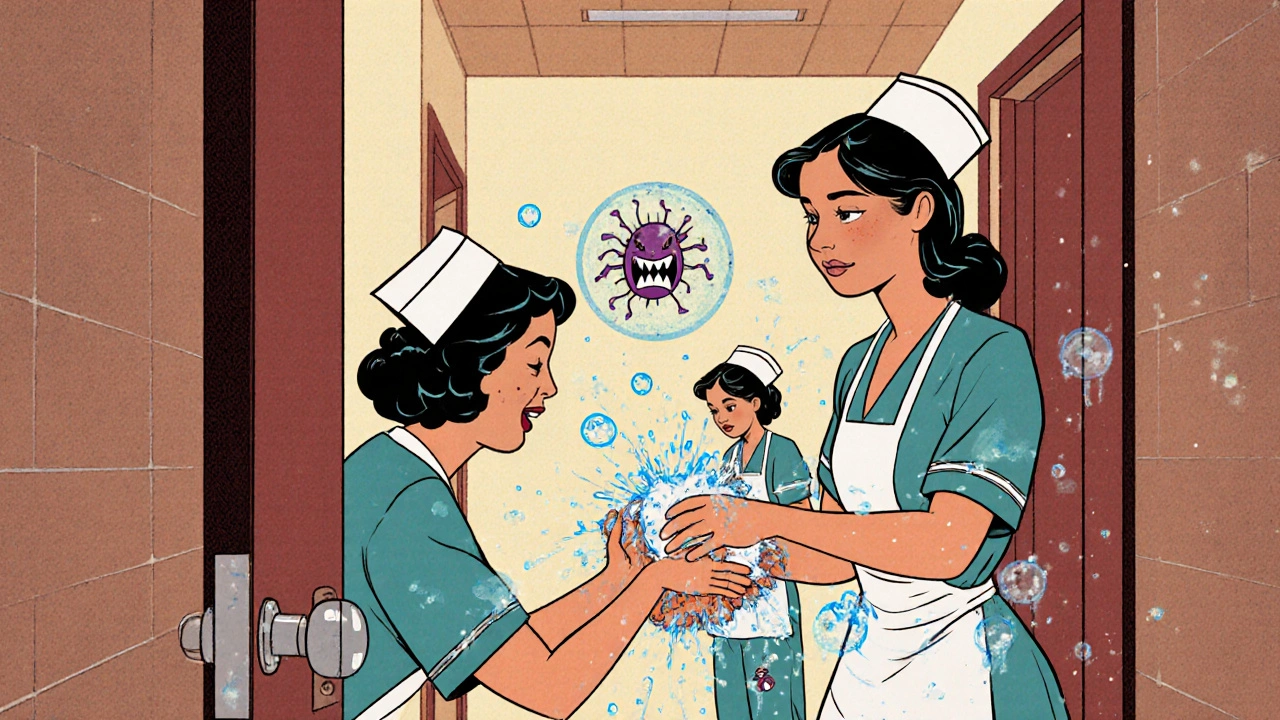
What’s the Best Treatment - and What’s Outdated?
Treatment depends on how bad it is. For mild to moderate cases, two drugs are now standard:
- Vancomycin: 125 mg taken orally four times a day for 10 days
- Fidaxomicin: 200 mg twice daily for 10 days
Metronidazole used to be the go-to. But it’s no longer first-line. Studies show it fails in 30% to 40% of cases now - up from just 5% a decade ago. The CDC and Infectious Diseases Society of America (IDSA) removed it from first-line recommendations in 2017. Why? It’s less effective, and it doesn’t protect your gut microbiome the way vancomycin or fidaxomicin do.
Fidaxomicin has one big advantage: it’s better at preventing recurrence. Only 13% of patients relapse after fidaxomicin, compared to 22% with vancomycin. But it costs over $3,000 per course - 75 times more than metronidazole. Many hospitals don’t stock it because of the price. That creates a real gap in care.
For severe cases - where white blood cell counts rise above 15,000 or creatinine climbs above 1.5 - doctors use higher-dose vancomycin (500 mg four times daily). If the patient has ileus (a paralyzed bowel), they may also get rectal vancomycin or IV metronidazole. And never, ever take loperamide (Imodium) or other anti-diarrheals. They trap the toxins inside your colon and can make things much worse.
What Happens When C. diff Comes Back?
One in five patients gets C. diff again after treatment. For some, it’s three, four, even seven times. Each recurrence makes the next one more likely.
For the first recurrence, doctors often repeat the same antibiotic - but with a twist. A tapered vancomycin schedule is common: 125 mg four times daily for 10-14 days, then twice daily for 7 days, then once daily for 7 days, then every 2-3 days for up to 8 weeks. This slow withdrawal helps your gut flora recover.
Fidaxomicin can also be used again, sometimes followed by rifaximin to keep C. diff from bouncing back.
But the real game-changer for multiple recurrences is fecal microbiota transplantation (FMT). It’s not as scary as it sounds. Doctors take stool from a healthy donor, process it, and deliver it to the patient - usually through a colonoscopy, enema, or capsule. The goal? Rebuild a healthy gut microbiome. Success rates? 85% to 90%. One patient on a health forum wrote: “After 7 recurrences over 18 months, one FMT cleared it permanently. I wish I hadn’t waited so long.”
In April 2023, the FDA approved Vowst, the first oral microbiome therapy for preventing C. diff recurrence. It’s a capsule filled with bacterial spores - no colonoscopy needed. It’s already changing how doctors treat repeat cases.
How to Prevent C. diff in the First Place
Prevention starts with two things: smarter antibiotic use and better hygiene.
Antibiotic stewardship means using antibiotics only when truly needed, choosing narrow-spectrum drugs when possible, and keeping courses as short as possible. Hospitals with formal stewardship programs have cut C. diff rates by 26%.
Handwashing is non-negotiable. Alcohol-based hand sanitizers? Useless against C. diff spores. Only soap and water work. In hospitals, staff are trained to scrub for at least 20 seconds. At home, wash your hands after using the bathroom and before eating.
Environmental cleaning matters too. Regular disinfectants won’t kill C. diff spores. You need EPA-registered sporicidal cleaners - those on List K. If someone in your home has C. diff, clean the toilet, doorknobs, and faucets daily with these products.
Probiotics? Some people swear by them. Saccharomyces boulardii and Lactobacillus rhamnosus GG have shown promise in studies - reducing risk by up to 60% in high-risk groups. But the IDSA doesn’t recommend them routinely. The evidence is mixed, and not all probiotics are created equal.
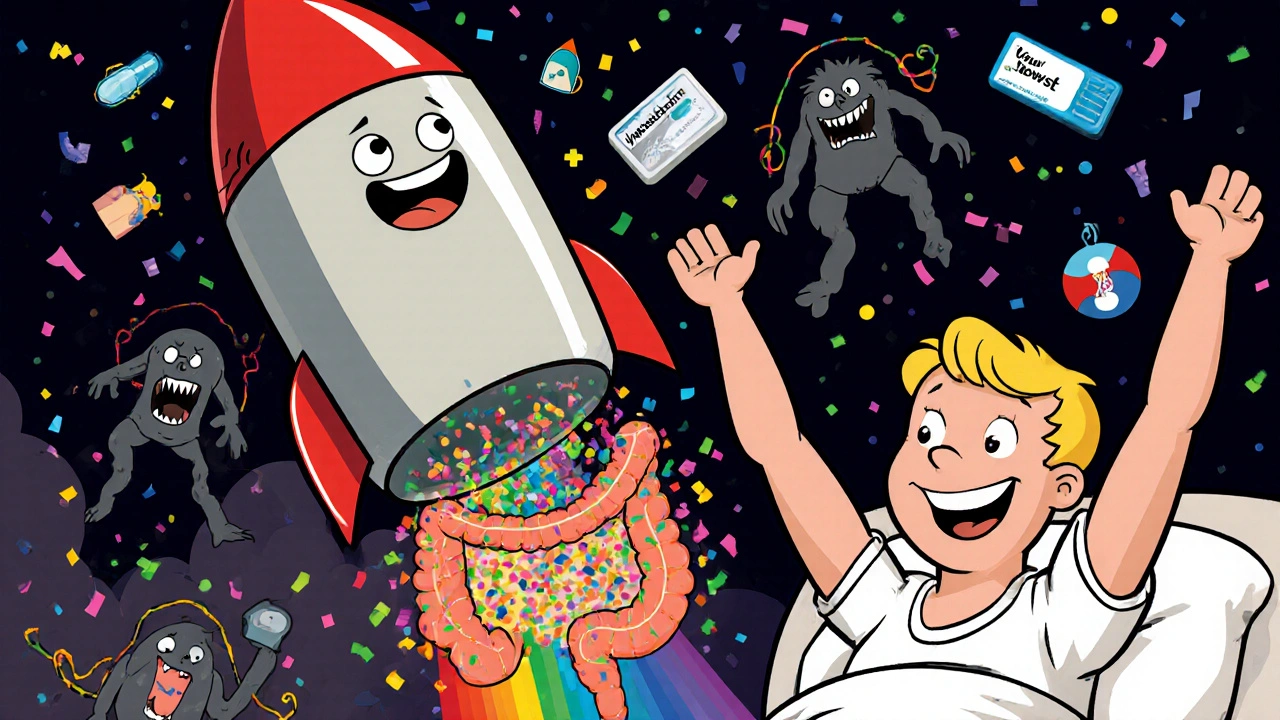
What About New Treatments on the Horizon?
The future of C. diff treatment is moving away from killing bacteria - and toward protecting the gut.
Bezlotoxumab (Zinplava), a monoclonal antibody approved in 2016, doesn’t kill C. diff. Instead, it neutralizes one of its toxins. When given with antibiotics, it cuts recurrence risk by 10 percentage points - from 27% down to 17%. It’s given as a single IV infusion. But it’s expensive and only used in high-risk patients.
Ridinilazole, a new antibiotic in phase III trials, showed 45% sustained cure rates in a 2022 Lancet study - compared to 30% for vancomycin. It’s designed to target C. diff while sparing other gut bacteria. If approved, it could be a major step forward.
And then there’s cadazolid, another promising drug. In trials, it had fewer recurrences than vancomycin - 12.5% versus 25.7%. It’s not yet FDA-approved, but it’s being closely watched.
Recovery Isn’t Just About Stopping Diarrhea
Even after the diarrhea stops, many patients struggle. A 2022 analysis of over 1,200 patient reports found:
- 45% reported brain fog - trouble concentrating, memory lapses
- 37% had fatigue lasting weeks after symptoms cleared
- 82% had to avoid certain foods (dairy, sugar, fried foods) for months
It’s not just physical. The emotional toll is real. Many patients feel isolated, anxious, or ashamed. One Reddit user wrote: “I was misdiagnosed as IBS for six months. By the time they tested for C. diff, I’d lost 20 pounds and couldn’t leave the house.”
Recovery takes time. Eat bland, easy-to-digest foods. Stay hydrated. Avoid sugar and alcohol - they feed bad bacteria. Consider talking to a dietitian who understands gut health. And don’t rush back to antibiotics unless absolutely necessary.
Bottom Line: C. diff Is Preventable - But Only If We Take It Seriously
C. diff isn’t a rare glitch. It’s a direct result of how we use antibiotics and how we clean our hospitals and homes. The tools to stop it exist: better prescribing, better hygiene, better diagnostics, and new treatments like FMT and Vowst.
If you’re on antibiotics and develop diarrhea, don’t brush it off. Talk to your doctor. If you’ve had C. diff before, ask about prevention strategies before your next course of antibiotics. And if you’re in a hospital, ask if they’re using sporicidal cleaners and if staff are washing their hands properly.
This isn’t just about surviving an infection. It’s about protecting your gut - and your future health - from a preventable threat.
Can probiotics prevent C. diff infection?
Some probiotics, like Saccharomyces boulardii and Lactobacillus rhamnosus GG, have shown promise in reducing C. diff risk by up to 60% in high-risk patients - especially those on broad-spectrum antibiotics. But the Infectious Diseases Society of America does not currently recommend them for routine use because the evidence is inconsistent. Not all probiotics work, and quality varies widely. If you want to try one, talk to your doctor first.
Is C. diff only a hospital problem?
No. While C. diff was once mostly seen in hospitals and nursing homes, community-associated cases have increased by 24% since 2012. People can get it from contaminated surfaces at home, gyms, or public restrooms. You don’t need to be hospitalized to be at risk - especially if you’ve recently taken antibiotics.
Why can’t I take Imodium for C. diff diarrhea?
Anti-diarrheal medications like loperamide (Imodium) slow down your bowel movements, which traps C. diff toxins inside your colon. This can worsen inflammation, increase the risk of toxic megacolon, and delay recovery. Doctors strongly advise against using them. Let your body expel the toxins - even if it’s uncomfortable.
How do I know if I need a fecal transplant?
Fecal microbiota transplantation (FMT) is typically considered after two or more recurrences of C. diff, especially if antibiotics haven’t worked. It’s highly effective - curing 85% to 90% of cases. If you’ve had multiple relapses, talk to an infectious disease specialist. New oral options like Vowst are now available and easier to access than traditional colonoscopy-based FMT.
Can C. diff come back even after treatment?
Yes. About 20% of people have a recurrence after initial treatment, and the risk increases with each episode. After two recurrences, the chance of another is over 60%. That’s why treatment strategies now focus on preventing relapse - using tapered antibiotics, fidaxomicin, bezlotoxumab, or FMT - not just curing the current infection.
Are there any new antibiotics for C. diff?
Yes. Ridinilazole, currently in late-stage trials, showed a 45% sustained cure rate in a 2022 study - significantly better than vancomycin’s 30%. It’s designed to kill C. diff while sparing other gut bacteria. Cadazolid is another candidate with lower recurrence rates in trials. Neither is FDA-approved yet, but they represent a shift toward microbiome-sparing treatments.
